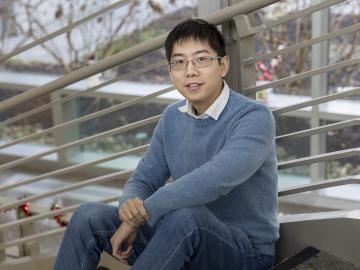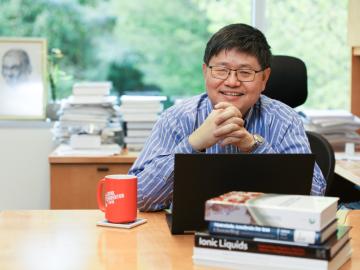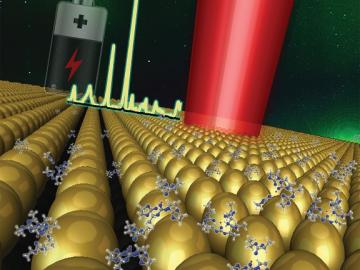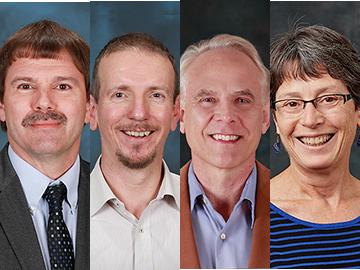
Filter News
Area of Research
- (-) Materials (145)
- Advanced Manufacturing (8)
- Biological Systems (2)
- Biology and Environment (73)
- Biology and Soft Matter (1)
- Building Technologies (4)
- Clean Energy (166)
- Climate and Environmental Systems (4)
- Computational Biology (2)
- Computer Science (3)
- Electricity and Smart Grid (1)
- Energy Frontier Research Centers (1)
- Energy Sciences (1)
- Fossil Energy (1)
- Fuel Cycle Science and Technology (1)
- Functional Materials for Energy (2)
- Fusion and Fission (20)
- Fusion Energy (6)
- Isotopes (7)
- Materials for Computing (11)
- National Security (39)
- Neutron Science (67)
- Nuclear Science and Technology (36)
- Nuclear Systems Modeling, Simulation and Validation (3)
- Quantum information Science (3)
- Renewable Energy (1)
- Sensors and Controls (2)
- Supercomputing (100)
News Topics
- 3-D Printing/Advanced Manufacturing (11)
- Advanced Reactors (2)
- Artificial Intelligence (7)
- Big Data (2)
- Bioenergy (7)
- Biology (3)
- Biomedical (6)
- Buildings (2)
- Chemical Sciences (13)
- Clean Water (1)
- Climate Change (1)
- Composites (4)
- Computer Science (11)
- Coronavirus (3)
- Critical Materials (5)
- Cybersecurity (2)
- Decarbonization (3)
- Energy Storage (22)
- Environment (7)
- Exascale Computing (2)
- Frontier (2)
- Fusion (2)
- Grid (3)
- High-Performance Computing (4)
- Isotopes (8)
- Machine Learning (5)
- Materials (26)
- Materials Science (46)
- Mathematics (1)
- Microscopy (13)
- Molten Salt (1)
- Nanotechnology (24)
- National Security (3)
- Neutron Science (17)
- Nuclear Energy (6)
- Partnerships (4)
- Physics (17)
- Polymers (10)
- Quantum Science (6)
- Security (2)
- Simulation (1)
- Space Exploration (1)
- Summit (2)
- Sustainable Energy (7)
- Transformational Challenge Reactor (3)
- Transportation (6)
Media Contacts

Scientists at have experimentally demonstrated a novel cryogenic, or low temperature, memory cell circuit design based on coupled arrays of Josephson junctions, a technology that may be faster and more energy efficient than existing memory devices.

Eugene P. Wigner Fellow Victor Fung’s story is proof that a series of positive experiences around science and happy accidents can lead to a rewarding research career. He joined ORNL in 2019.

Researchers at ORNL have developed a quantum chemistry simulation benchmark to evaluate the performance of quantum devices and guide the development of applications for future quantum computers.

A team of scientists has for the first time measured the elusive weak interaction between protons and neutrons in the nucleus of an atom. They had chosen the simplest nucleus consisting of one neutron and one proton for the study.

Scientists at the Department of Energy’s Oak Ridge National Laboratory have created a recipe for a renewable 3D printing feedstock that could spur a profitable new use for an intractable biorefinery byproduct: lignin.



By studying the inner workings of lithium-ion batteries, Oak Ridge National Laboratory researchers have developed a highly sensitive technique to characterize and measure at the electrolyte and electrode interface.

Four researchers at the Department of Energy’s Oak Ridge National Laboratory have been elected fellows of the American Association for the Advancement of Science (AAAS). The AAAS is the world’s largest multidisciplinary scientific society and publisher of the Sci...

Leah Broussard, a physicist at the Department of Energy’s Oak Ridge National Laboratory, has so much fun exploring the neutron that she alternates between calling it her “laboratory” and “playground” for understanding the universe. “The neutron is special,” she said of the sub...


